Cataplectic seizure. Cataplexy: Understanding Symptoms, Causes, and Treatment Options
What are the common triggers for cataplexy. How is cataplexy diagnosed. What treatment options are available for managing cataplexy symptoms. Can cataplexy be prevented.
The Nature of Cataplexy: A Complex Neurological Condition
Cataplexy is a neurological disorder characterized by sudden, brief episodes of muscle weakness or paralysis triggered by strong emotions. This condition is most commonly associated with type 1 narcolepsy, a chronic sleep disorder that affects the brain’s ability to regulate sleep-wake cycles.
While cataplexy can be a challenging condition to live with, understanding its mechanisms and available treatment options can significantly improve quality of life for those affected. Let’s explore the intricacies of this fascinating neurological phenomenon.
Key Features of Cataplexy
- Sudden loss of muscle tone and control
- Typically triggered by strong emotions
- Episodes last from seconds to minutes
- Consciousness is maintained during attacks
- Most commonly associated with type 1 narcolepsy
Recognizing Cataplexy: Symptoms and Manifestations
Cataplectic episodes can vary widely in severity and frequency. Some individuals may experience mild symptoms infrequently, while others may have more severe and frequent attacks. Understanding the range of symptoms can help in recognizing and managing the condition.

Common Symptoms of Cataplexy
Can cataplexy affect different parts of the body? Indeed, cataplexy can manifest in various ways, including:
- Buckling knees or leg weakness
- Drooping eyelids
- Slack jaw or slurred speech
- Head nodding
- Dropping objects due to hand weakness
- Complete body collapse in severe cases
Is it possible to remain conscious during a cataplectic attack? Yes, unlike seizures or fainting, individuals experiencing cataplexy remain fully aware of their surroundings. This unique aspect of the condition can make episodes particularly distressing for those affected.
The Science Behind Cataplexy: Unraveling the Causes
To comprehend cataplexy, it’s crucial to understand its relationship with narcolepsy and the underlying neurological mechanisms at play. The condition’s roots lie in the complex interplay of brain chemistry and sleep regulation.
The Narcolepsy Connection
Why is cataplexy so closely linked to narcolepsy? The answer lies in a brain chemical called hypocretin (also known as orexin). People with type 1 narcolepsy have abnormally low levels of this crucial neurotransmitter, which plays a vital role in regulating sleep-wake cycles.

This deficiency can lead to the intrusion of rapid eye movement (REM) sleep characteristics into wakefulness, manifesting as cataplexy. Essentially, the muscle paralysis normally associated with REM sleep occurs at inappropriate times, triggered by emotional stimuli.
The Role of the Immune System
What causes the loss of hypocretin-producing neurons? While the exact mechanism remains unclear, research suggests an autoimmune component. The body’s immune system may mistakenly attack and destroy the brain cells responsible for producing hypocretin, leading to the development of narcolepsy with cataplexy.
Diagnosing Cataplexy: Challenges and Approaches
Accurately diagnosing cataplexy can be challenging, as its symptoms can sometimes be mistaken for other neurological conditions. A comprehensive approach involving medical history, symptom evaluation, and specialized tests is often necessary.
Diagnostic Methods
How do doctors diagnose cataplexy? The diagnostic process typically involves:

- Detailed medical history and symptom review
- Sleep studies, including polysomnography and multiple sleep latency tests
- Hypocretin level measurement via lumbar puncture (in some cases)
- Genetic testing to identify narcolepsy-associated genes
- Ruling out other neurological conditions with similar symptoms
Why is early diagnosis important? Prompt identification of cataplexy can lead to earlier intervention and management, potentially improving long-term outcomes and quality of life for affected individuals.
Treatment Strategies: Managing Cataplexy Symptoms
While there is no cure for cataplexy, various treatment options can help manage symptoms and improve daily functioning. A multifaceted approach often yields the best results.
Pharmacological Interventions
What medications are used to treat cataplexy? Several types of drugs have shown efficacy in managing cataplexy symptoms:
- Sodium oxybate (Xyrem): A medication that consolidates nighttime sleep and reduces cataplexy episodes
- Antidepressants: SSRIs and SNRIs can help suppress REM sleep and reduce cataplexy frequency
- Pitolisant: A histamine H3 receptor antagonist that can improve wakefulness and reduce cataplexy
- Solriamfetol: A newer medication that promotes wakefulness and may help with cataplexy symptoms
Non-Pharmacological Approaches
Are there non-drug treatments for cataplexy? Yes, several lifestyle modifications and coping strategies can complement medical treatment:

- Maintaining a consistent sleep schedule
- Practicing stress-reduction techniques
- Avoiding known emotional triggers when possible
- Educating family, friends, and colleagues about the condition
- Joining support groups for individuals with narcolepsy and cataplexy
Living with Cataplexy: Navigating Daily Challenges
Cataplexy can significantly impact various aspects of daily life, from work and social interactions to personal safety. Understanding these challenges and developing coping strategies is crucial for those affected by the condition.
Safety Considerations
How can individuals with cataplexy ensure their safety? Some important safety measures include:
- Avoiding potentially dangerous activities during emotional situations
- Using assistive devices or safety equipment when necessary
- Informing trusted individuals about the condition and how to respond during an attack
- Creating a safe home and work environment to minimize injury risk during episodes
Emotional and Social Impact
Can cataplexy affect relationships and social interactions? Indeed, the unpredictable nature of cataplexy can lead to social anxiety and isolation. Open communication with loved ones and developing a support network can help address these challenges.
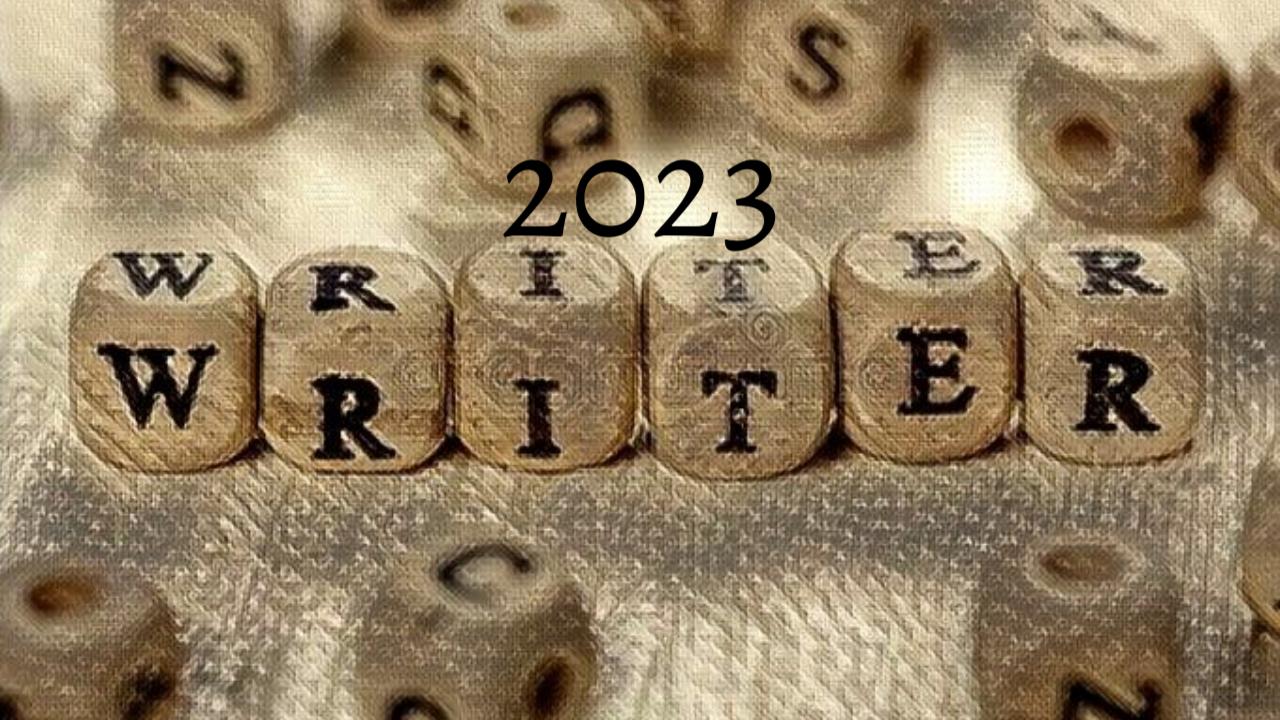
Research and Future Directions: Hope on the Horizon
The field of cataplexy research is dynamic, with ongoing efforts to better understand the condition and develop more effective treatments. These advancements offer hope for improved management and potentially even prevention of cataplexy in the future.
Emerging Therapies
What new treatments are being developed for cataplexy? Some promising areas of research include:
- Gene therapy approaches to restore hypocretin production
- Immunomodulatory treatments to address the potential autoimmune component
- Novel drug formulations for improved symptom control
- Targeted neuromodulation techniques
Preventive Strategies
Is it possible to prevent cataplexy? While primary prevention remains challenging, early intervention in high-risk individuals (such as those with a family history of narcolepsy) may help delay or mitigate symptom onset. Ongoing research aims to identify biomarkers and develop preventive strategies for narcolepsy and associated cataplexy.

As our understanding of cataplexy and its underlying mechanisms continues to grow, so too does the potential for more effective management and treatment options. For those living with this challenging condition, staying informed about the latest developments and working closely with healthcare providers can pave the way for improved quality of life and symptom control.
What Is Cataplexy? Symptoms, Causes, Diagnosis, Treatment, and Prevention
Cataplexy is a brain disorder that causes a sudden and temporary loss of muscle tone and control.
The episodes (or “cataplectic attacks”) are, in most cases, triggered by strong or extreme emotions, including anger, stress, anxiety, fear, a depressed mood, joy, and laughter.
The vast majority of people who experience cataplexy do so as a result of having type 1 narcolepsy, a chronic sleep and neurological disorder in which the brain has trouble properly controlling wake and sleep cycles.
In very rare cases, cataplexy has been reported in individuals without narcolepsy.
Living with cataplexy is challenging. You cannot always control your emotions or emotional response, so cataplectic attacks can occur randomly. For some, it means being constantly vigilant about how to avoid losing control of their bodies.
Here are some important things to know about why cataplexy happens, its connection to narcolepsy, and how to manage the potentially debilitating symptoms.
Signs and Symptoms of Cataplexy
Cataplexy’s episodes of uncontrollable muscle weakness typically last a few seconds to a few minutes and can happen as infrequently as a few times a year or as often as a few times a day.
They are typically caused by a strong feeling of sadness, excitement, joy, or other emotion and can cause someone’s knees to buckle or their head to bob or cause them to fall down if they are standing and lose control of their leg muscles, explains Shelley Hershner, MD, clinical associate professor of neurology at the University of Michigan in Ann Arbor.
Cataplexy is often misdiagnosed as a seizure disorder, but unlike with fainting or seizure disorders, people who experience cataplexy are awake and aware of what’s happening. Some may fall asleep after the episode ends.
People who have cataplexy must constantly be on guard to avoid injury. When an episode of cataplexy strikes, an individual may slump, lose his or her grip on something, or fall down.
“Some people may avoid swimming, climbing a ladder, or taking a bath,” says Dr. Hershner.
Hershner.
Cataplexy can cause muscle weakness in any part of the body, though cataplexy commonly affects the limbs (hands may drop whatever they’re holding, knees may buckle, legs may collapse) and face (eyelids may droop, the jaw may go slack and speech become slurred, the head may nod). The attacks can range from mild, such as a slight drooping of the eyelids, to severe, such as a total body collapse.
Causes and Risk Factors of Cataplexy
The vast majority of cases of cataplexy occur because an individual has type 1 narcolepsy.
The exact cause of narcolepsy is unknown, but people with type 1 narcolepsy have abnormally low levels of a sleep-wake regulating brain hormone called hypocretin (also known as orexin).
This deficiency can cause rapid eye movement (REM) sleep to happen at the wrong time.
It’s not clear what causes this loss of hypocretin, but it may be the result of immune system changes that cause the immune system to attack hypocretin-containing brain cells.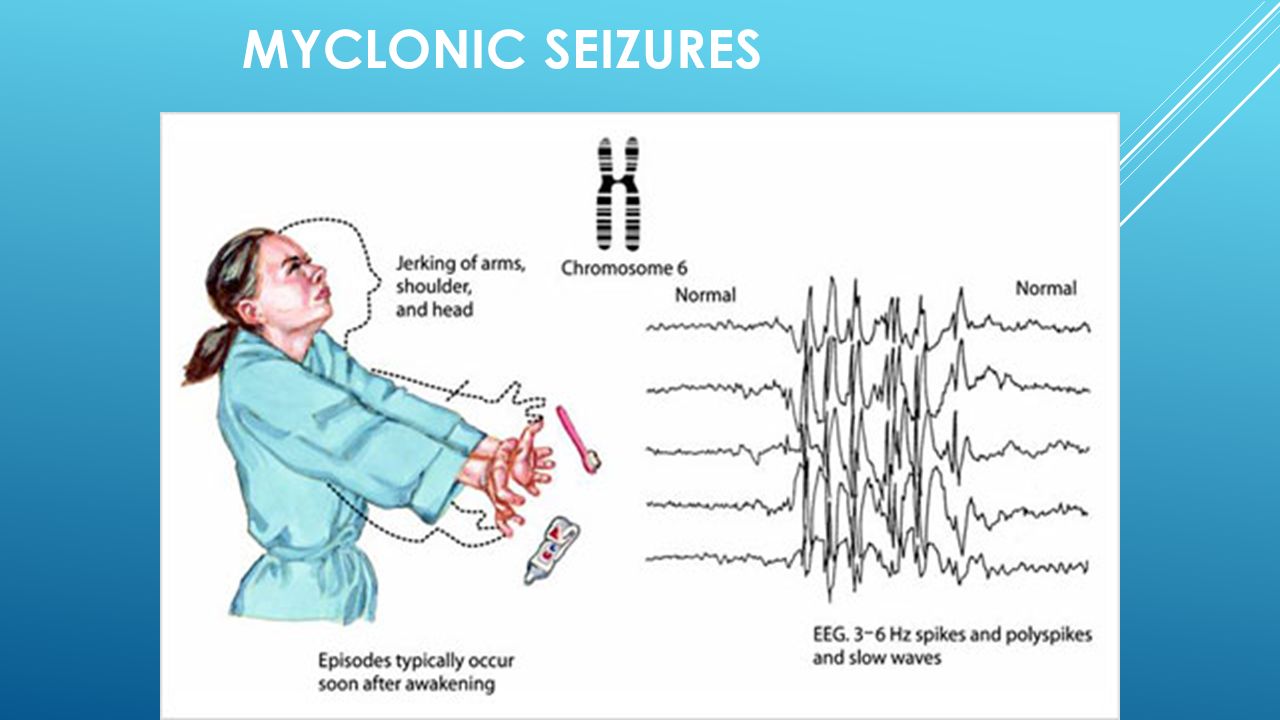
Most people who are diagnosed with narcolepsy do have cataplexy, too.
In some cases, type 2 narcolepsy — the one without cataplexy, which has milder symptoms — may develop into narcolepsy with cataplexy, says Eric Olson, MD, a sleep medicine specialist at the Mayo Clinic in Rochester, Minnesota.
Understanding REM sleep — specifically, the way that sleep cycles are disrupted in people with narcolepsy — may help us gain insight into why cataplexy happens in people with narcolepsy. In normal sleep cycles, people go through three stages of non–rapid eye movement (NREM) sleep before entering the REM phase.
It takes roughly 70 to 100 minutes to go through the first NREM-REM cycle of the night, and 90 to 120 minutes during later cycles, which continue to repeat throughout the night.
But these cycles malfunction in people with narcolepsy. They may enter REM sleep right away when they fall asleep, and then wake up, bypassing the NREM stage; this can occur during the night as well as during daytime naps, blurring the lines between wakefulness and sleep.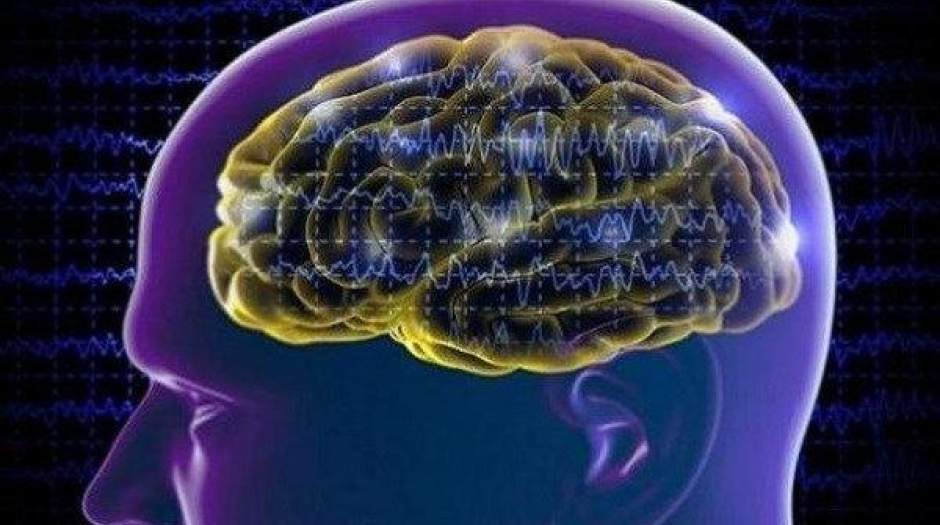
RELATED: What’s Happening in the Brain During the Stages of Sleep
Another important point: The REM stage of sleep is when dreaming occurs and when our bodies become paralyzed — a mechanism that is thought to prevent us from acting out our dreams and harming ourselves.
In people with narcolepsy, this sleep paralysis associated with REM sleep happens at the wrong time, too, which is why sleep paralysis and vivid hallucinations while falling asleep or waking up can also occur.
Cataplexy episodes resemble the loss of muscle control that naturally happens during REM sleep, but they occur when someone is awake rather than during sleep.
Research has suggested that, in healthy individuals, positive emotions may lead to muscle weakness (feeling weak with laughter, for instance), but the brain chemical hypocretin (the one absent in people with narcolepsy) prevents that loss of muscle tone from being anything more than a brief event.
This may help explain why, in people who have narcolepsy with cataplexy, that response is more extreme. More research needs to be done to better understand why and how strong emotions trigger this response to begin with, as well as the role of hypocretin in narcolepsy symptoms and treatment.
More research needs to be done to better understand why and how strong emotions trigger this response to begin with, as well as the role of hypocretin in narcolepsy symptoms and treatment.
How Is Cataplexy Diagnosed?
Most people with cataplexy have type 1 narcolepsy, and cataplexy is the first symptom to appear in about 10 percent of narcolepsy cases. However, cataplexy can be misdiagnosed as a seizure disorder.
If you feel the sudden urge to sleep during the day even after a night of good sleep, doze off at inappropriate times (when working or talking to a friend), have dream-like hallucinations just before falling asleep, or experience momentary paralysis while awake, you may have narcolepsy with cataplexy.
However, most primary care physicians don’t know how to recognize and treat narcolepsy, so you may want to see a sleep doctor if you suspect you have this condition.
Or your primary care doctor can refer you to a sleep specialist.
To determine if you have narcolepsy with cataplexy, your sleep doctor may first ask you for a detailed sleep history, which often includes filling out a short series of questions to gauge your sleepiness, formally known as the Epworth Sleepiness Scale. You may be asked to keep a detailed sleep log for one or two weeks and to wear a wristwatch-like device known as an actigraph to measure periods of activity and rest.
You may be asked to keep a detailed sleep log for one or two weeks and to wear a wristwatch-like device known as an actigraph to measure periods of activity and rest.
If your sleep history, sleep diary, and actigraph data suggest you may have narcolepsy, your doctor will have you spend the night at a sleep center to undergo a series of tests. These tests can help determine the severity of your narcolepsy, or identify other possible causes for your symptoms.
Tests may include the following:
- Polysomnography Using electrodes attached to your scalp, this test measures the electrical activity of your brain and heart, as well as the movement of your muscles and eyes during sleep. This test requires an overnight stay at a medical facility.
- Multiple Sleep Latency Test Also known as a daytime nap study, this full-day test evaluates excessive daytime sleepiness by measuring how quickly you fall asleep during the day. It is the standard tool used to diagnose narcolepsy.

- Hypocretin Level Measurement This test measures your hypocretin levels. People with low or no hypocretin are classified as having type 1 narcolepsy. However, because this test requires your physician to remove cerebrospinal fluid (a fluid that protects your brain and spinal cord) from your lumbar spine, it is rarely used.
Treatment and Medication Options for Cataplexy
There is no cure for cataplexy or narcolepsy.
Symptoms of narcolepsy (including cataplexy) typically develop over several months and last a lifetime.
Depending on the severity, some people with cataplexy may only have one or two attacks in a lifetime, whereas others may experience multiple attacks a day.
Without proper diagnosis and treatment of narcolepsy, symptoms such as cataplexy can be dangerous and “life-restricting,” notes Dr. Olson. “Someone may stop competing to avoid winning something, or avoid laughing, or even engaging in intercourse,” says Olson.
In short, people affected by cataplexy may learn to modify their behavior and activities to minimize their risk of bringing on an episode, and many end up avoiding situations that may cause cataplexy.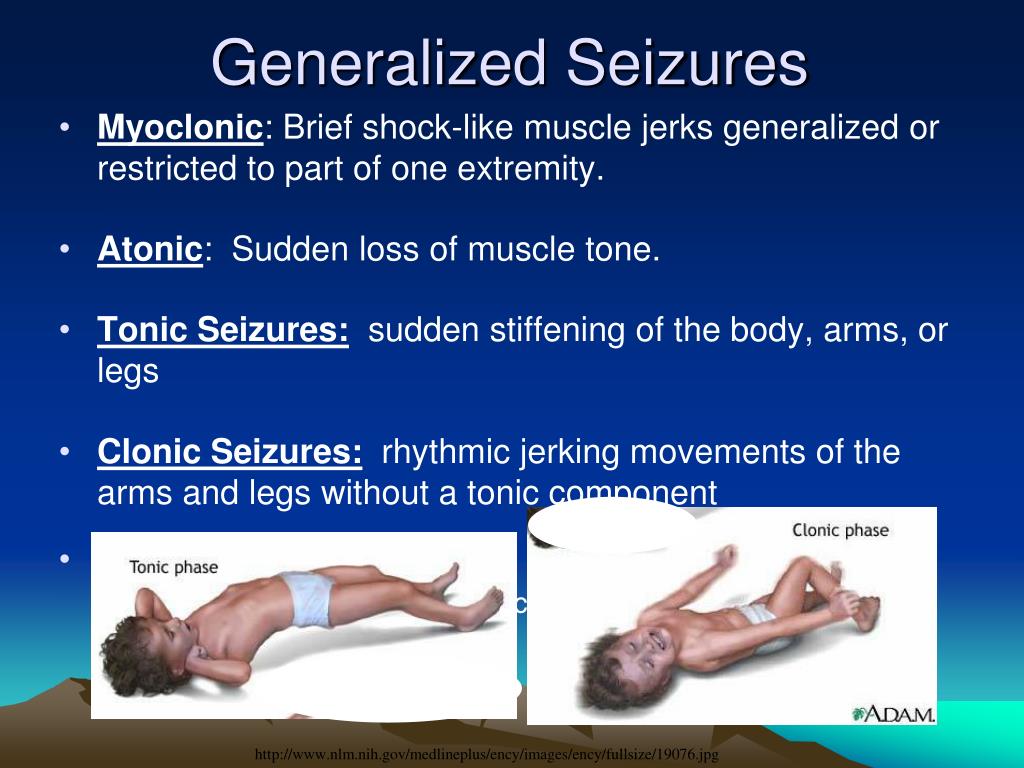
These adjustments can be consequential and vastly affect quality of life, such as if someone skips social situations with friends or avoids driving.
However, while narcolepsy with cataplexy is a lifelong condition, there are medications that can help you manage the symptoms.
Medication Options for Cataplexy
There are drugs that have been shown to be effective in treating cataplexy. Medications may reduce cataplectic attacks by 90 percent or eliminate them entirely in some people.
The primary treatment options are medications that allow people to stay awake during the day and push them to sleep at night, says Lois E. Krahn, MD, a professor of psychiatry in the Mayo Clinic College of Medicine who is based in Phoenix, Arizona.
There is some evidence that tricyclic antidepressants, such as clomipramine (Anafranil), imipramine (Tofranil), and desipramine (Norpramin), and selective serotonin reuptake inhibitors (SSRIs) may be helpful for cataplexy, as well as other narcolepsy symptoms.
Sodium oxybate, taken at night for its sedative effect, has also been shown to be effective in treating severe daytime sleepiness as well as cataplexy attacks.
If an individual has very rare episodes of cataplexy, intervention may be unnecessary.
But people who experience frequent attacks (or ones that greatly disturb their lives) should discuss medication options with their doctor and consider the potential benefits, as well as possible side effects. For people with severe cataplexy, being able to take medication that can help control attacks may significantly improve social interaction, safety, and overall quality of life.
Alternative and Complementary Therapies for Cataplexy
In addition to medications, cognitive behavioral therapy (CBT), or learning techniques to improve behavior, may help people manage several symptoms of narcolepsy, including cataplexy.
CBT techniques for narcolepsy vary but can involve helping patients recognize conditions and emotions that trigger their cataplectic attacks and teaching them how to respond in ways that prevent an attack from occurring. Another potential CBT technique is known as stimulus satiation, a procedure in which the patient is repeatedly exposed to the trigger that prompts cataplectic episodes until its effect is lost. However, most studies have looked at CBT for other sleep disorders, and more research on the application of CBT for narcolepsy is needed.
Another potential CBT technique is known as stimulus satiation, a procedure in which the patient is repeatedly exposed to the trigger that prompts cataplectic episodes until its effect is lost. However, most studies have looked at CBT for other sleep disorders, and more research on the application of CBT for narcolepsy is needed.
Counseling and support groups can also help people with narcolepsy learn coping strategies to help manage symptoms like cataplexy.
Find a support group through Narcolepsy Network. Or ask your doctor to help you locate a support group or qualified counselor.
Prevention of Cataplexy
Medications are typically the most effective way to prevent cataplexy, though other strategies may also help:
- Get enough sleep or plan strategic naps. You may be more likely to experience a cataplectic attack when you’re sleep-deprived. “If someone is exhausted, they are more vulnerable to an emotional trigger, so being well-rested is important,” Dr.
 Krahn says. If you’re unable to get a good night’s sleep or you’re bothered by excessive daytime sleepiness, try to take short, scheduled naps at times when you tend to feel sleepiest. “Naps don’t have to be terribly long — a person with narcolepsy can benefit from a 20-minute nap,” Krahn says.
Krahn says. If you’re unable to get a good night’s sleep or you’re bothered by excessive daytime sleepiness, try to take short, scheduled naps at times when you tend to feel sleepiest. “Naps don’t have to be terribly long — a person with narcolepsy can benefit from a 20-minute nap,” Krahn says. - Get up and move. Regular physical activity may indirectly help with cataplexy by keeping daytime sleepiness at bay, according to Krahn. So if you start feeling sleepy and can’t take a quick nap, go for a walk.
- Get help from friends, family, and coworkers. Let people know if your cataplexy is triggered by strong emotions or specific situations. If you sense an attack is coming, encourage people to avoid these triggers if possible. Though you may not want to avoid strong emotions or specific situations, it may be preferable to an attack — especially if an attack is about to occur at an awkward time (like during a meal or work meeting).
Complications of Cataplexy
One of the more common complications of cataplexy is physical harm.
Cataplexy can cause injury to yourself or others if it occurs while you’re driving, cooking, or operating machinery.
Severe attacks can also cause head trauma, such as bleeding between the brain tissue and skull (also known as an intracranial hemorrhage).
Cataplexy can also interfere with relationships and daily life. As many attacks are triggered by intense emotions, like anger and joy, people with cataplexy may withdraw from emotional interactions or avoid social situations.
Research and Statistics: How Common Is Cataplexy?
Roughly 70 million Americans suffer from sleep disorders like insomnia, sleep apnea, restless legs syndrome, and narcolepsy.
Narcolepsy occurs in men and women equally and is estimated to affect roughly 1 in 2,000 people in the United States, which equals roughly 200,000 Americans and 3 million people worldwide.
Roughly half of all people with narcolepsy also have cataplexy.
However, because narcolepsy is often unrecognized or misdiagnosed, the actual number may be higher.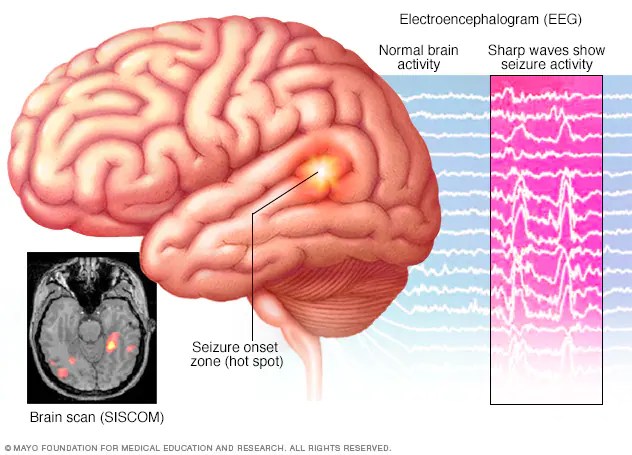
The symptoms of narcolepsy (including cataplexy) can appear at any age, but they typically start in childhood, adolescence, or young adulthood (ages 7 to 25).
Symptoms will develop over the course of several months and last a lifetime.
Conditions Related to Cataplexy
The following conditions can cause or be associated with cataplexy:
- Narcolepsy This is a chronic neurological disorder that affects the brain’s sleep-wake cycles.
- Excessive Daytime Sleepiness (EDS) One of the most obvious symptoms of narcolepsy is excessive daytime sleepiness, or the overwhelming need to sleep, regardless of how much sleep you may have gotten the night before. Some people are more likely to experience a cataplectic attack when sleepy.
- Sleep Paralysis This common narcolepsy symptom resembles cataplexy, except it occurs during sleep.
Resources We Love
American Academy of Sleep Medicine (AASM)
Founded in 1975, this professional society now has a combined 11,000 accredited member sleep centers, physicians, scientists, and other sleep-focused healthcare professionals. The society offers professional development opportunities for physicians, as well as a variety of sleep resources for the general public, including a sleep education site with a directory of sleep centers, patient-friendly guides that explain clinical practice guidelines, and a monthly research journal.
The society offers professional development opportunities for physicians, as well as a variety of sleep resources for the general public, including a sleep education site with a directory of sleep centers, patient-friendly guides that explain clinical practice guidelines, and a monthly research journal.
National Sleep Foundation (NSF)
This nonprofit has been an advocate for sleep and health for nearly 30 years. Their site provides helpful articles about a variety of sleep topics, and their content is reviewed by a medical team to ensure the information is accurate and up-to-date.
Mayo Clinic
Mayo Clinic offers everything you need to know about narcolepsy with cataplexy: what it is, symptoms and causes, and when to see a doctor for help. This well-known hospital also provides detailed information about the tests used to diagnose narcolepsy, medications to treat narcolepsy, how to prepare for your appointment with your doctor, and what questions you can expect from your doctor during your initial visit.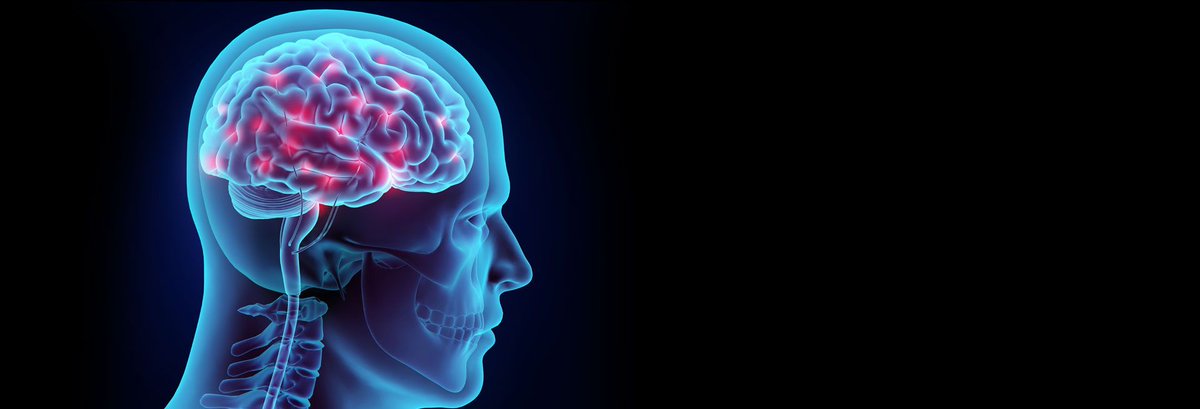
National Institute of Neurological Disorders and Stroke (NINDS)
This division of the National Institutes of Health focuses on researching the brain and nervous system to reduce neurological disorders and diseases (like narcolepsy with cataplexy). Its site offers a detailed fact sheet about narcolepsy, including the latest research and clinical trials. You’ll also find a list of recommended resources for finding more information about narcolepsy.
Narcolepsy Network
Founded in 1986, this nonprofit provides education and resources to support people with narcolepsy. Find support groups (including advice for starting your own), informational videos, directories to find a sleep specialist or center, and a listing of additional sites where you can find more resources.
Wake Up Narcolepsy (WUP)
WUP is a nonprofit dedicated to raising awareness about narcolepsy, as well as supporting research to find a cure. Join their online support group, attend an event, tune in to their weekly podcast, or browse their informational videos and brochures.
Join their online support group, attend an event, tune in to their weekly podcast, or browse their informational videos and brochures.
Harvard Medical School Division of Sleep Medicine
Harvard Medical School offers a comprehensive site dedicated to understanding, treating, and living with narcolepsy. You’ll find helpful resources for managing narcolepsy day-to-day, including a video series featuring real-life patients and educators. Still not sure if you have narcolepsy? The site offers self-evaluation tools, as well as tips for finding a qualified sleep medicine specialist.
Additional reporting by Katherine Lee.
Editorial Sources and Fact-Checking
- Narcolepsy. National Institute of Neurological Disorders and Stroke. January 20, 2023.
- Egel RT, Lee A, Bump T, Javois A. Isolated Cataplexy in the Differential Diagnosis of Drop Attacks: A Case of Successful Clinical Diagnosis and Treatment [PDF]. Case Reports in Neurological Medicine.
 July 2012.
July 2012. - Narcolepsy: Symptoms and Causes. Mayo Clinic. January 14, 2023.
- Schwab RJ. Narcolepsy. Merck Manual. September 2022.
- Narcolepsy. MedlinePlus. June 1, 2018.
- Cataplexy. Sleep Foundation. April 6, 2023.
- Narcolepsy. National Organization for Rare Disorders. June 23, 2017.
- Narcolepsy: Understanding Narcolepsy. Harvard Medical School Division of Sleep Medicine. February 21, 2018.
- Slowik JM, Collen JF, Yow AG. Narcolepsy. StatPearls. June 21, 2022.
- Natural Patterns of Sleep. Harvard Medical School Division of Sleep Medicine. December 18, 2007.
- Sleep Paralysis: Symptoms, Causes, and Treatment. Sleep Foundation. March 17, 2023.
- Narcolepsy Symptoms. Sleep Foundation. March 21, 2023.
- Burgess CR, Scammell TE. Narcolepsy: Neural Mechanisms of Sleepiness and Cataplexy. The Journal of Neuroscience. September 5, 2012.
- Narcolepsy: Self-Evaluation. Harvard Medical School Division of Sleep Medicine.
 February 21, 2018.
February 21, 2018. - Narcolepsy: How to Diagnose Narcolepsy? American Academy of Sleep Medicine. August 2020.
- Narcolepsy: Daily Life. Harvard Medical School Division of Sleep Medicine. February 21, 2018.
- Narcolepsy: Medications. Harvard Medical School Division of Sleep Medicine. February 21, 2018.
- Marín Agudelo HA, Jiménez Correa U, Sierra JC, et al. Cognitive Behavioral Treatment for Narcolepsy: Can It Complement Pharmacotherapy? Sleep Science. March 2014.
- Narcolepsy: Self-Care. Harvard Medical School Division of Sleep Medicine. February 21, 2018.
- Narcolepsy. Sleep Foundation. March 31, 2023.
- Mirabile VS, Sharma S. Cataplexy. StatPearls. June 21, 2022.
- Common Sleep Disorders. Cleveland Clinic. December 23, 2020.
- Narcolepsy Fast Facts. Narcolepsy Network. June 2015.
- Narcolepsy: Symptoms. Harvard Medical School Division of Sleep Medicine. February 21, 2018.
Show Less
Causes of Narcolepsy
Narcolepsy is a neurological disorder that disrupts the brain’s ability to control its own sleep-wake cycles. People with the condition may fall asleep…
People with the condition may fall asleep…
By Katherine Lee
What Is Narcolepsy? Symptoms, Causes, Diagnosis, Treatment, and Prevention
Everything you need to know about this chronic neurological disorder, including the types of narcolepsy, causes, symptoms, diagnosis, and treatment. And…
By Katherine Lee
9 Common Myths and Misunderstandings About Narcolepsy
Narcolepsy is not as common as other sleep disorders such as sleep apnea and insomnia and is therefore often misunderstood. Here are the facts behind …
By Katherine Lee
9 Lifestyle Tips That Can Help You Manage Narcolepsy Symptoms
For people with narcolepsy, medications can be useful in managing symptoms. But some lifestyle measures, such as strategically timed naps and good sleep…
By Katherine Lee
Who Should Be on Your Narcolepsy Healthcare Team?
There are specially trained healthcare providers who can help you manage and treat narcolepsy. Here are the doctors and other professionals who you may…
Here are the doctors and other professionals who you may…
By Jessica Migala
How Well Are You Managing Narcolepsy?
The right diagnosis and treatment can help you manage narcolepsy, a sleep disorder that causes excessive daytime sleepiness and other symptoms. This quiz…
By Erica Patino
Cataplexy: Symptoms, causes, and treatment
Cataplexy is a sudden, brief loss of voluntary muscle tone triggered by strong emotions such as laughter, excitement, anger or fear.
Around one-third of people who experience cataplexy also have narcolepsy, a sleep disorder that also features excessive daytime sleepiness and sleep paralysis. Laughter is the most common trigger of cataplexy.
Narcolepsy is thought to affect 135,000–200,000 people in the United States.
Cataplexy occurs during waking hours. During a mild attack, there may be a barely visible weakness in a muscle, such as drooping of the eyelids.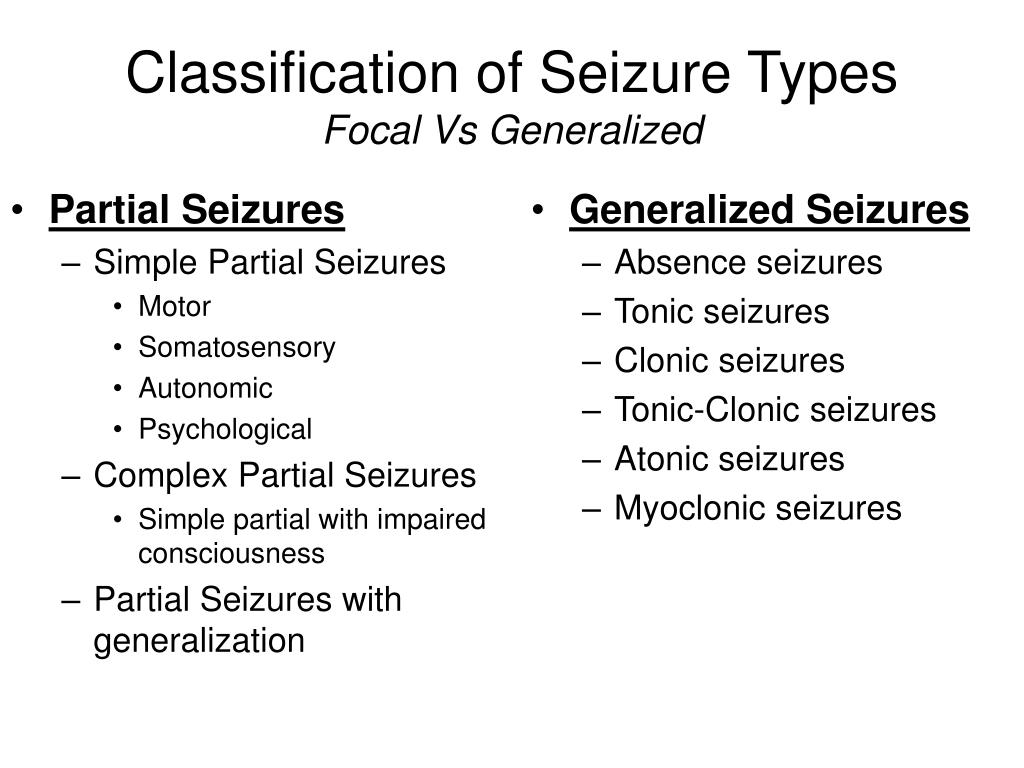 A more severe episode may involve a total body collapse.
A more severe episode may involve a total body collapse.
Although it is a different condition, cataplexy is sometimes misdiagnosed as a seizure disorder.
There is no cure for cataplexy, but it can be managed with medications and modification of potential triggers.
Fast facts on cataplexy
- During an episode of cataplexy, an individual is awake but temporarily paralyzed.
- Cataplexy is worsened by fatigue and strong emotion and affects males and females equally.
- Cataplexy is linked to narcolepsy and can occur after suddenly stopping an antidepressant medication.
- Sodium oxybate is approved by the U. S. Food and Drug Administration (FDA) for the treatment of cataplexy
Was this helpful?
Share on PinterestA person with cataplexy may collapse temporarily as a result of excitement, laughter, or strong emotions.
Cataplexy is a sudden loss of muscle control, typically on both sides of the body, triggered by strong, often pleasant emotions.
Laughter is the most typical trigger, but other triggers may include happiness, excitement, annoyance, surprise, fear, or a stressful event.
Cataplexy is most often associated with narcolepsy, but it can occur with other rare disorders such as Niemann-Pick type C disease, Prader-Willi syndrome and Wilson’s disease.
Occasionally, cataplexy can be seen in other medical conditions including stroke, multiple sclerosis, head injury and encephalitis.
The duration of a cataplexy attack is brief, generally lasting anywhere from a few seconds to a few minutes — usually less than 2 minutes — followed by a rapid return of normal muscle tone and function.
The REM sleep disassociation hypothesis suggests that cataplexy is the muscle paralysis that normally occurs during REM sleep intruding into waking hours.
The exact underlying cause of this intrusion is unknown, but a loss of neurons that produce hypocretin (also known as orexin) is thought to be a major contributing factor. Hypocretin is a neurotransmitter involved in the promotion of wakefulness within the sleep/wake cycle,
Hypocretin is a neurotransmitter involved in the promotion of wakefulness within the sleep/wake cycle,
People with cataplexy have been found to have a certain human leukocyte antigen, variations in T-cell receptors, or dysfunctional immune system responses to certain antigen exposures. It is thought that narcolepsy may be an autoimmune disorder, but more research is needed.
A study published in the Journal of Clinical Investigation in 2010 revealed that the loss of hypocretin is caused by an autoimmune response targeting tribbles homolog 2 (trib 2) autoantigens. This autoimmune response causes trib 2 antibodies to form, which target and kill the neurons in the brain that produce hypocretin.
The frequency of cataplectic episodes varies from less than one per year to several per day. On average, a person with cataplexy will experience one or more episodes each week.
Symptoms of cataplexy associated with narcolepsy often begin in childhood and young adulthood, between the ages of 7 and 25 years, but it can start at any time.
Cataplectic attacks can vary widely. They may be mild and barely noticeable or severe with full body collapse.
Symptoms of a cataplectic episode may include:
- facial twitching, flickering, or grimacing
- unusual tongue movements
- jaw tremor
- dropping the head or jaw
- knee trembling or buckling
- drooping eyelid
- speech difficulty
A person may collapse and be unable to move.
The episode usually lasts a few minutes or less and then passes without intervention. However, it is important to make sure the person will not hurt themselves if they collapse to a fall.
An individual experiencing cataplexy remains conscious, is able to breathe, and can move their eyes.
Tests can help diagnose narcolepsy with cataplexy, but a diagnosis is also based on the patient’s description of events and history.
Often, an individual complains to a doctor about excessive daytime sleepiness (EDS) with a persistent background feeling of sleepiness during waking hours.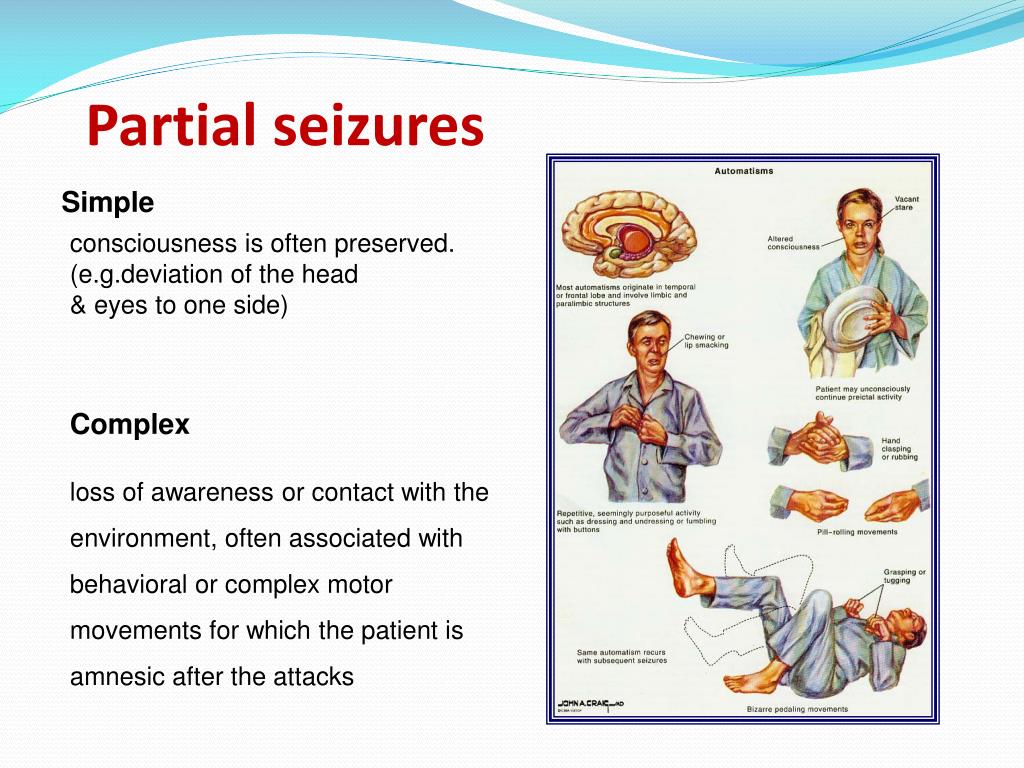 EDS is commonly the first symptom of narcolepsy. However, if cataplexy occurs with EDS, narcolepsy is likely to be present.
EDS is commonly the first symptom of narcolepsy. However, if cataplexy occurs with EDS, narcolepsy is likely to be present.
Individuals who have EDS or symptoms of cataplexy should see their medical provider.
A sleep study (a polysomnogram) will most likely be ordered by the provider, followed by a Multiple Sleep Latency Test (MSLT), a series of five naps scheduled to be taken over the course of a day.
Carrying out the MSLT the day after polysomnography enables doctors to find out whether or not the sleep obtained the previous night has any effect on daytime napping.
There is no cure for cataplexy, and treatment is symptom management with good sleep hygiene practices and the use of medication as necessary.
Additionally, safety measures should be put in place to avoid serious injury that can result from falls.
Good sleep hygiene practices include:
- keeping a consistent sleep schedule, including getting up and going to bed at the same time every day, even on weekends or during vacations
- striving for at least 7 to 8 hours of sleep, or the amount that normally makes you feel refreshed
- making the bedroom quiet and relaxing and keeping it at a comfortable, cool temperature
- limiting exposure to light in the evenings
- exercising regularly and maintaining a healthful diet
- avoiding a large meal before bedtime and opting for a light, healthful snack if necessary
- avoiding caffeine in the late afternoon or evening
- avoiding alcohol
- scheduling one or more short naps during the day.

Sodium oxybate at doses between 6 and 9 grams (g) nightly is the medication approved by the U.S. Food and Drug Administration (FDA) for the treatment of cataplexy. Sodium oxybate is effective in reducing both the frequency and intensity of attacks.
Possible adverse effects are dizziness, headache, and nausea. This medication should not be used in conjunction with alcohol or any other central nervous system (CNS) depressant due to the risk of respiratory depression and other significant CNS depressant effects.
Other medications that may help control symptoms are antidepressants. These include venlafaxine, a serotonin-noradrenaline reuptake inhibitor (SNRI) antidepressant, and tricyclic antidepressants such as clomipramine, imipramine, and desipramine.
However, evidence supporting the use of antidepressants for cataplexy is varied. In addition, abrupt withdrawal of venlafaxine can potentially cause rebound cataplexy.
In regards to safety, even if an individual senses the onset of an episode, injury is very possible with cataplexy.
To help avoid injury from occurring with cataplexy:
Share on PinterestInjury can occur if a person falls suddenly.
- Assess for and be aware of potential dangers such as glass, sharp edges, and heights.
- Practice relaxation and stress management techniques.
- Avoid sleep deprivation.
- Avoid situations that are likely to evoke strong emotions, or prepare ahead of time by sitting down or having a companion nearby.
- Do not drive a car or operate heavy machinery until cleared by a medical provider.
- Enlist the help of significant others and friends, and educate them on the seriousness of the disorder.
Cataplexy is a transient, sudden loss of voluntary muscle control brought on by a strong emotional trigger such as laughing or excitement. Cataplexy is almost always associated with narcolepsy.
There is no cure, but education, sleep hygiene practices, and prescription medication can help people with this condition enjoy a better quality of life.
Psychomotor disorders in neurology
The term “psychomotor” in psychoneurology is used to distinguish complex motor activity that is associated with the psyche from simple reflexes.
Types of psychomotor disorders
The group of psychomotor disorders includes the following types of disorders:
- Stupor (catatonic, depressive, apathetic, psychogenic, hallucinatory)
- Psychomotor agitation (catatonic, manic, hysterical, hallucinatory-delusional, hebephrenic)
- Seizures.
Stupor
Stupor is a psychomotor disorder characterized by inhibition of motor activity, as well as speech and thinking.
Catatonic stupor
Catatonic stupor always occurs suddenly, it may be preceded by a pre-stuporous state or catatonic excitement. This type of psychomotor disorder can be manifested by the following symptoms:
- Complete immobility or sharply slow movements.
- A symptom of wax flexibility – the patient maintains the position given to him, often uncomfortable, against the background of increased muscle tone.

- Air cushion symptom – patients in a horizontal position without head support may lie with their head elevated for a long time, as if on a pillow.
- Mutism – the patient is silent, does not make contact, does not respond to questions even with signs.
- Negativism. The patient unmotivatedly resists the requests and actions of others – either simply does not fulfill the requests, then we are talking about passive negativism, or performs the opposite actions – active negativism.
- Amimia – the complete absence of facial movements.
- Symptom of a hood – the patient pulls clothes, a towel, a sheet over his head, like a hood, leaving his face open.
- Impulsivity. Patients suddenly abruptly jump out of bed, may accidentally injure themselves or others, and then just as suddenly lie down again in an immobilized or fetal position.
- Echolalia – the patient repeats the words of others.
- Echomimicry – copying the facial expressions of others.

- Symptom Bumke – no pupillary reaction to pain.
In catatonic stupor, consciousness may be preserved or clouded.
Depressive stupor
Depressive stupor is a psychomotor disorder that develops against the background of severe depression and is characterized by motor immobility up to complete stupor. This psychomotor disorder is easily distinguished from a catatonic stupor: a frank suffering mask on the patient’s face is characteristic, symptoms of wax flexibility, mutism, and negativism never occur.
Apathetic stupor
Psychomotor disorder in the form of apathetic stupor is characterized by the patient’s complete indifference to anything. The patient is immobilized, answers only the simplest questions, does not take care of himself, does not follow the elementary rules of hygiene, his facial expression is devastated. This condition may continue for several months.
Psychogenic stupor
This type of psychomotor disorders often occurs after severe mental trauma, its characteristic features are complete motor numbness, an expression of tragedy and bewilderment on the face. Usually this condition does not last long and stops when the traumatic situation is resolved. This form of psychomotor disorders includes hysterical stupor – a passive-defensive reaction that occurs in a tense environment that requires responsibility from a person and threatens his well-being. It is characterized by immobility, passivity, silence of the patient; sometimes patients grimace, take pretentious poses. This condition may alternate with demonstrative behavior, psychomotor agitation.
Usually this condition does not last long and stops when the traumatic situation is resolved. This form of psychomotor disorders includes hysterical stupor – a passive-defensive reaction that occurs in a tense environment that requires responsibility from a person and threatens his well-being. It is characterized by immobility, passivity, silence of the patient; sometimes patients grimace, take pretentious poses. This condition may alternate with demonstrative behavior, psychomotor agitation.
Hallucinatory stupor
This psychomotor disorder develops when the patient’s attention is completely absorbed by vivid, exciting hallucinations. The patient is lethargic to the point of complete stupor, an expression of horror appears on the face. These episodes are brief but tend to recur. Their cause is most often infectious psychosis.
Psychomotor agitation
The most common types of psychomotor agitation are catatonic, manic, hysterical, hallucinatory-delusional, hebephrenic.
- Catatonic excitation is characterized by uncoordinated impulsive, mannered, repetitive movements, increased talkativeness of the patient, up to incoherence. This psychomotor disorder is often accompanied by a repetition of the actions of others, the behavior is devoid of rationality. Grimacing is characteristic, facial expressions do not correspond to emotional experiences. Separately, lucid catatonia stands out, in which the state of catatonic arousal is combined with mental automatisms, hallucinations, delirium, but consciousness remains preserved.
- Manic excitement due to excessively elevated mood; the interconnectedness and purposefulness of movements are preserved, the patient’s actions are correct and logical, loud accelerated speech is characteristic, separate loud cries. Often there are moria (regression of behavior). In severe cases, speech completely disappears.
- Hysterical excitement is a state that is always provoked by some mental factor.
 The patient’s behavior is always demonstrative, mannered, theatrical, when attracting the attention of others, the symptoms are aggravated.
The patient’s behavior is always demonstrative, mannered, theatrical, when attracting the attention of others, the symptoms are aggravated. - Hebephrenic excitation is a fairly typical disorder, which is characterized by foolishness, a sharply elevated mood. Patients behave senselessly, shout out phrases with neologisms, their movements are pretentious, an abundance of laughter and jokes evokes opposite emotions in those around them. Patients can mimic others, grab clothes, pester, jump ridiculously. This state of excessive gaiety is often replaced by weeping with sobs and scolding.
- Hallucinatory-delusional arousal is a state that reflects the content of the patient’s hallucinatory experiences. Patients can experience joy or fear, hide, wave their hands, shake something off themselves, run away, etc.
Seizures
A seizure is a psychomotor disorder characterized by a sudden, brief loss of consciousness or the development of a typical seizure.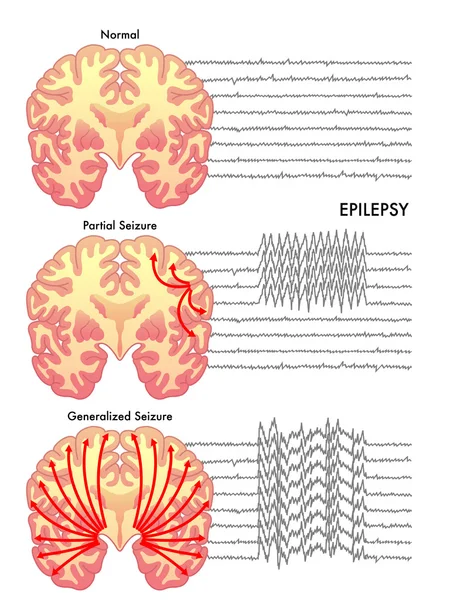 The main cause of the development of the disorder is epilepsy. Epileptic seizures can be provoked by external factors such as mental strain, overwork, and somatic diseases.
The main cause of the development of the disorder is epilepsy. Epileptic seizures can be provoked by external factors such as mental strain, overwork, and somatic diseases.
Types of seizures
The following types of seizures occur in neuropsychiatric practice:
- Major convulsive (most common)
- Minor convulsive
- Cataleptic
- Absence
- Pycnoleptic
- Narcoleptic
- Jacksonian
- Kozhevnikov’s seizure.
Grand mal seizure
This psychomotor disorder is characterized by typical dynamics – the following stages are distinguished in its course:
- Precursors
- Aura
- Tonic convulsions phase
- Clonic convulsions phase
- Post-seizure period
- Pathological sleep.
Harbingers can be noted a few days or hours before the onset of a seizure. Characterized by physical and psychological discomfort, irritability, headache of varying intensity, bad mood, dizziness, dysphoria.
The aura is actually the beginning of this type of psychomotor disorders. A characteristic feature of the aura is that the patient’s consciousness is preserved and he clearly remembers all his sensations. Often the aura lasts a few seconds, but it seems to a person that this state lasts much longer. The aura does not happen in every case and can flow in various forms:
- Sensory – typical olfactory hallucinations, paresthesias, depersonalization, impaired perception of the body in space.
- Motor – sharp turns of the head and body movements, changes in facial expressions, the desire to run away somewhere.
- Mental – characterized by a feeling of fear, a feeling of stopping time or changing its speed; a person can see frightening hallucinations with an abundance of blood. In rare cases, the psychic aura is manifested by a feeling of complete harmony, ecstasy, bliss.
- Vegetative – manifested by various autonomic disorders: a feeling of lack of air, palpitations, excessive sweating; a person may later describe his condition as if he felt that something happened, but did not understand what exactly.

- Visceral – the leading signs are pain or discomfort in the internal organs (heart, stomach, and others).
The tonic phase immediately follows the aura, occurs suddenly, is characterized by a tonic contraction of all muscle groups, an instant disorder of consciousness like a coma. The patient suddenly falls, which is often caused by trauma to the skull.
In some cases, the tonic phase is preceded by a sharp loud cry – this symptom is called “the cry of a wounded animal”; it is caused by a powerful spasm of the muscles of the vocal apparatus and the rapid passage of air.
In this phase, breathing is completely absent. Involuntary physiological departures are possible. Patients often bite their tongue and cheeks. On average, this phase of psychomotor disorder lasts 30-40 seconds, but not more than a minute. At this time, there are no pupillary and any other reflexes (coma), the patient does not respond to any stimuli. Muscle spasms are so strong that the person arches and leans only on the back of the head and heels.
The clonic phase of the psychomotor disorder replaces the tonic; characterized by rapid contractions of individual muscle groups. Consciousness is absent, there are still no reflexes and reactions to stimuli, but breathing is restored. Foam forms on the lips due to the mixing of air inhaled with force with saliva and blood from a bitten lip or tongue.
This phase lasts about 3-4 minutes, then the convulsions gradually subside, the patient remains in a coma for some time, after which, through a soporous state, it passes into a state of pathological sleep.
During the period of abnormal sleep, the patient cannot be awakened, it is so deep. In rare cases, there is no pathological sleep phase, and consciousness returns immediately.
The entire major seizure is amnesiac, only the aura remains in memory. Since a person is in a coma during an attack, he does not feel the severe pain inherent in tonic and clonic convulsions.
Minor seizure
This type of psychomotor disorder can also start with an aura, but not always.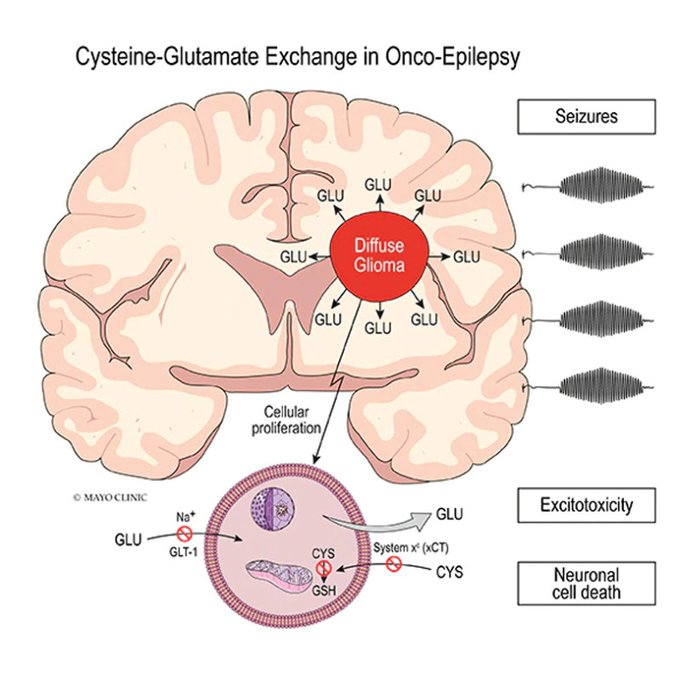 A sudden loss of consciousness that lasts for a few seconds is typical. There is no stage of tonic convulsions, so the patient does not fall. There are clonic twitches of individual muscles or muscle groups. The time of the attack is also amnesiac. The seizure does not last long, usually a few seconds.
A sudden loss of consciousness that lasts for a few seconds is typical. There is no stage of tonic convulsions, so the patient does not fall. There are clonic twitches of individual muscles or muscle groups. The time of the attack is also amnesiac. The seizure does not last long, usually a few seconds.
Minor seizures may manifest as nodding, pecking, convulsive movements of the head down and forward, in which patients often break their faces. Salaam convulsions are also possible – a person abruptly acquires a half-bow posture, his body bends, his head drops, his arms are half-bent (as with a Muslim greeting).
Cataleptic seizure
Catalepsy manifests itself as a sudden significant decrease in the tone of all muscle groups during crying, laughter, a sharp loud sound, bright sudden light. A person settles on the floor, while his consciousness is not clouded, there is no amnesia. Catalepsy includes seizures of cloos – a sudden break in the flow of thoughts with a feeling of absolute emptiness in the head, weightlessness of the body, lack of support under the feet.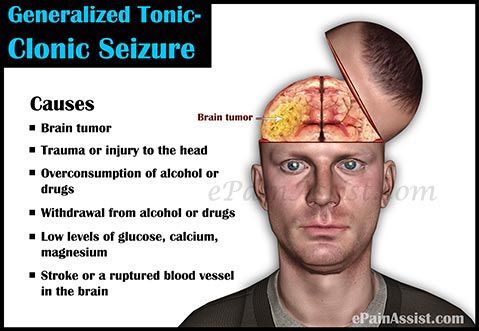 With such a psychomotor disorder, consciousness and memory of what happened are completely preserved, which is the difference from absence.
With such a psychomotor disorder, consciousness and memory of what happened are completely preserved, which is the difference from absence.
Other types
In psychoneurology, other types of seizures are less common.
- Absence is a psychomotor disorder, which is expressed by a short-term loss of consciousness in the absence of convulsions.
- A pycnoleptic seizure is characterized by loss of consciousness with instant freezing in place, rolling the eyes, throwing back the head, salivation. It occurs more often in young children.
- A narcoleptic seizure is defined by sudden, overwhelming drowsiness, usually at an inappropriate place and time, such as walking, performing on stage, or playing outdoor games. The patient sleeps for about an hour, after which he wakes up active and vigorous. This sign is included in the Pickwick Club syndrome.
- A Jacksonian seizure is a clonic or tonic convulsive contraction in isolation of the muscles of the arms and legs on one side of the body.
 In most cases, consciousness is preserved, it is disturbed only when convulsive activity passes to the second half of the body.
In most cases, consciousness is preserved, it is disturbed only when convulsive activity passes to the second half of the body. - Adversive seizure – a sharp turn of the head or the entire body in the direction opposite to the localization of the lesion in the central nervous system.
- Kozhevnikov’s seizure is a psychomotor disorder in which only the muscles of the limbs convulsively contract without disturbing consciousness.
All types of epileptic seizures must be differentiated from a hysterical seizure that occurs in a traumatic situation exclusively in the presence of spectators. A person with such an attack falls sharply, but more often not on the floor, but on a sofa or chair, maintains a beautiful pose with a suffering mask on his face.
Arbat Moscow | World Tourism
The route to the Boulevard Ring – and the Arbat beyond it – runs along Vozdvizhenka Street, which starts from the giant building of the Russian State Library. As well as Znamenka Street, located not far from it, is one of the most prestigious districts of Moscow, right on the threshold of the Kremlin.
Article content Moscow
Local attractions
developers used every opportunity to seize more territory for themselves here, from the destruction of the Tsarist Voentorg, which was listed as a protected landmark, to threats to the residents of nearby houses with a “leak” of gas.
Orlovs’ Profitable House (Arbat)
One of the untouched buildings so far is the 18th century Talyzin House, which formally houses the A.V. Alexey Shchusev (1873-1949).
Talyzin House (Museum of Architecture)
However, for more than 10 years the museum has been in a state of “reconstruction” (since its premises were leased for offices) and has decreased due to the placement of temporary exhibitions in the pharmacy chambers located in the courtyard behind the museum building where statues and wrought iron structures gather dust.
Shilov Gallery (Znamenka Street)
The restored chambers were once occupied by German pharmacists who planted a herbal garden on Vagankovsky Hill, located further along the picturesque Starovagankovsky Lane, which leads to the Cathedral of Christ the Savior.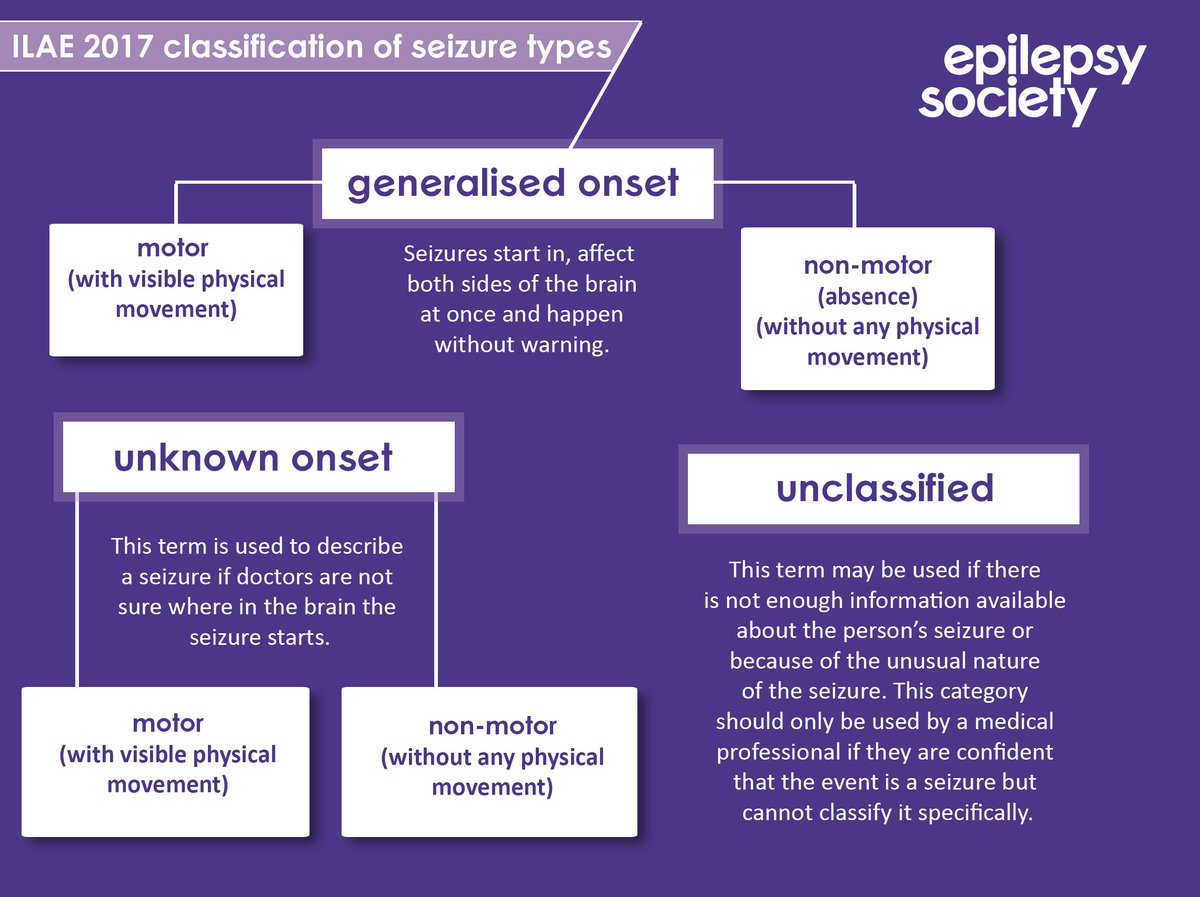
Sixties Café & Bar (Arbat)
The Palace of Soviets that Stalin intended to build there was just one of the many buildings designed by Soviet architects in the 1920s and 1930s, designs of which can be found in the charming virtual museum of paper architecture.
Volkonsky House
General Headquarters and House of Friendship of Peoples
A little further along Vozdvizhenka, on the corner of Bolshoy Znamensky Lane, there is a two-story house No. 9 with a flower cornice, which once belonged to Leo Tolstoy’s grandfather. Although he died before Tolstoy was born, in 1821, Prince Nikolai Volkonsky was portrayed in the novel War and Peace as the hot-tempered Prince Bolkonsky. Do not confuse him with Tolstoy’s second cousin, another Prince Volkonsky, exiled to Siberia for his participation in the Decembrist uprising.
The old and new building of the General Staff
Immediately behind this house are separate buildings of the General Staff of the Armed Forces, lined with marble.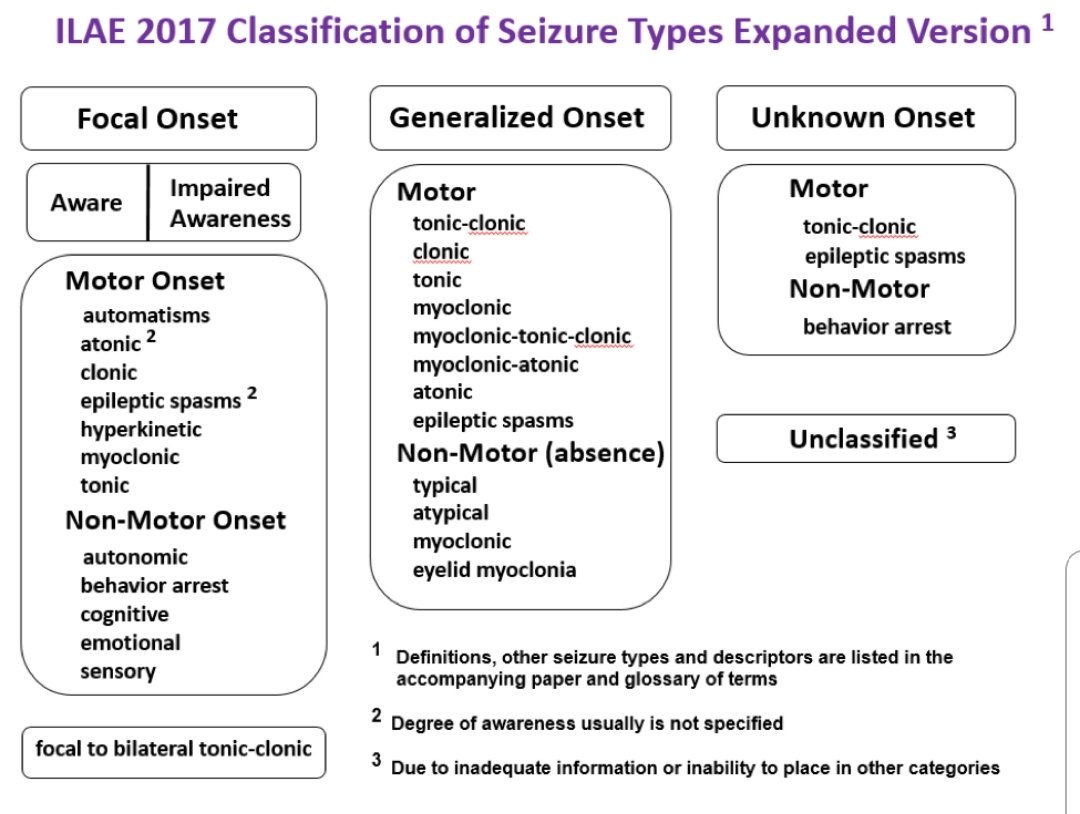 In its concrete belly is the Arbatskaya metro station of the Arbatsko-Pokrovskaya line, created in the 1930s, the entrance to the House of Friendship of Peoples, housed in a quaint mansion built in 1898 by wealthy Old Believer Arseny Morozov; it is decorated with towers entwined with stone ropes and stucco molding in the form of sea shells.
In its concrete belly is the Arbatskaya metro station of the Arbatsko-Pokrovskaya line, created in the 1930s, the entrance to the House of Friendship of Peoples, housed in a quaint mansion built in 1898 by wealthy Old Believer Arseny Morozov; it is decorated with towers entwined with stone ropes and stucco molding in the form of sea shells.
Arbatskaya (Pokrovskaya line)
When Morozov’s mother saw him, she announced: “Before, I was the only one who knew you were a fool, now all of Moscow knows.” Arseniy died of blood poisoning at the age of 35, after he shot himself in the leg to see if he could bear the pain. After the revolution, the mansion was occupied by anarchists, then it housed the headquarters of Proletkult, an organization that attracted Mayakovsky and Meyerhold, who tried to educate propagandist artists from workers and peasants – one of them settled in Morozov’s bathroom.
Arseniy Morozov’s mansion
In the 1950s, the building housed the House of Friendship of Peoples (Arseniy Morozov’s mansion), which in Soviet times was responsible for organizing meetings with foreign guests and supporting artists, now it has been renamed the Center for Scientific and Cultural Cooperation. Temporary exhibitions are the only way to visit inside. For more information, see the bulletin board located at the entrance.
Temporary exhibitions are the only way to visit inside. For more information, see the bulletin board located at the entrance.
Arseny Morozov’s mansion decor
Arbatskaya Square and Nikitsky Boulevard
Located up Vozdvizhenka, Arbatskaya Square bears the scars of several reconstructions. It has a tunnel built in the 1950s, which provides traffic along the Boulevard Ring, and another branched pedestrian tunnel under the square, where Moscow youth gathers. The square houses the exit from the Arbatskaya metro station of the Filevskaya line, built in the shape of a five-pointed star (a favorite architectural image of the 1930s), and the Prague restaurant.
Arbatskaya Ploshchad
Built before the revolution, Praga was considered the best restaurant in Moscow for a long time; diplomatic banquets were held here in Soviet times until the 1980s. Having received a crack in the lower part of the stone foundation in the early 1990s, the establishment was restored by T. Izmailov, a magnate whose zodiac sign now adorns all the plates and rugs in the restaurant.
Izmailov, a magnate whose zodiac sign now adorns all the plates and rugs in the restaurant.
Arbatskaya (Filyovskaya line)
While tourists usually get to the Arbat area by passing the Praga restaurant from behind, some Moscow sights require you to walk along the Boulevard Ring itself. At the beginning of Gogolevsky Boulevard, next to the square, there is a monument to N.V.The 40s replaced another one that the Soviet authorities considered too gloomy.
Restaurant “Prague”
Hotels in Moscow
Hotels at affordable prices
a large selection of accommodation
Air tickets to Moscow
Cheap plane tickets
extremely favorable price 9000 3
The original, created by the sculptor N. Andreev, was ” exiled” to the open courtyard of house number 7 on Nikitsky Boulevard, where there is a sad statue of Gogol in a raincoat, dejectedly lowering his eyes, and the pedestal of the statue is decorated with a border depicting the characters “Inspector” and “Taras Bulba” on it.
Monument to Gogol
In the public library, located on the right, devoted admirers of the writer’s talent created a memorial Gogol’s room (closed on Tuesdays and on the last day of the month; admission is free) in the room that was Gogol’s study in the last years of his life. Here he burned the second part of the novel “Dead Souls” in the fireplace and fell into religious melancholy. He had a cataleptic seizure, and, according to one version, he was mistakenly buried alive at the Novodevichy cemetery.
Nikitsky Boulevard
Across the street 150 meters further north at 12-a Nikitsky Boulevard, in a pale yellow mansion adorned with Corinthian pilasters, is a museum of Oriental art. Its excellent collections include Caucasian rugs, Indonesian shadow puppets, Vietnamese silver Buddha statues, samurai swords, lacquerware, porcelain, Chinese screens and clothing.
Museum of Oriental Art
Reproductions of paintings by N. K. Roerich, a Russian orientalist, are sold in the lobby.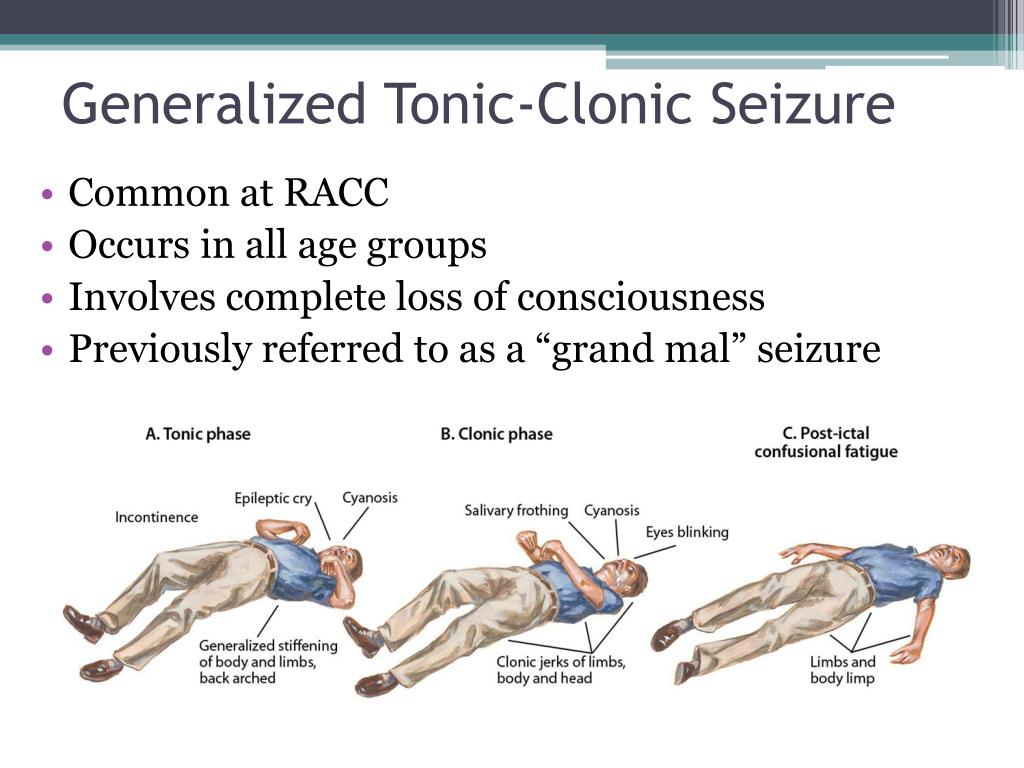


:max_bytes(150000):strip_icc()/overview-of-myoclonic-epilepsy-4175105_final-294e31312f174513a65079058ebb40fb.png) Krahn says. If you’re unable to get a good night’s sleep or you’re bothered by excessive daytime sleepiness, try to take short, scheduled naps at times when you tend to feel sleepiest. “Naps don’t have to be terribly long — a person with narcolepsy can benefit from a 20-minute nap,” Krahn says.
Krahn says. If you’re unable to get a good night’s sleep or you’re bothered by excessive daytime sleepiness, try to take short, scheduled naps at times when you tend to feel sleepiest. “Naps don’t have to be terribly long — a person with narcolepsy can benefit from a 20-minute nap,” Krahn says. July 2012.
July 2012. February 21, 2018.
February 21, 2018.


 The patient’s behavior is always demonstrative, mannered, theatrical, when attracting the attention of others, the symptoms are aggravated.
The patient’s behavior is always demonstrative, mannered, theatrical, when attracting the attention of others, the symptoms are aggravated.
 In most cases, consciousness is preserved, it is disturbed only when convulsive activity passes to the second half of the body.
In most cases, consciousness is preserved, it is disturbed only when convulsive activity passes to the second half of the body.